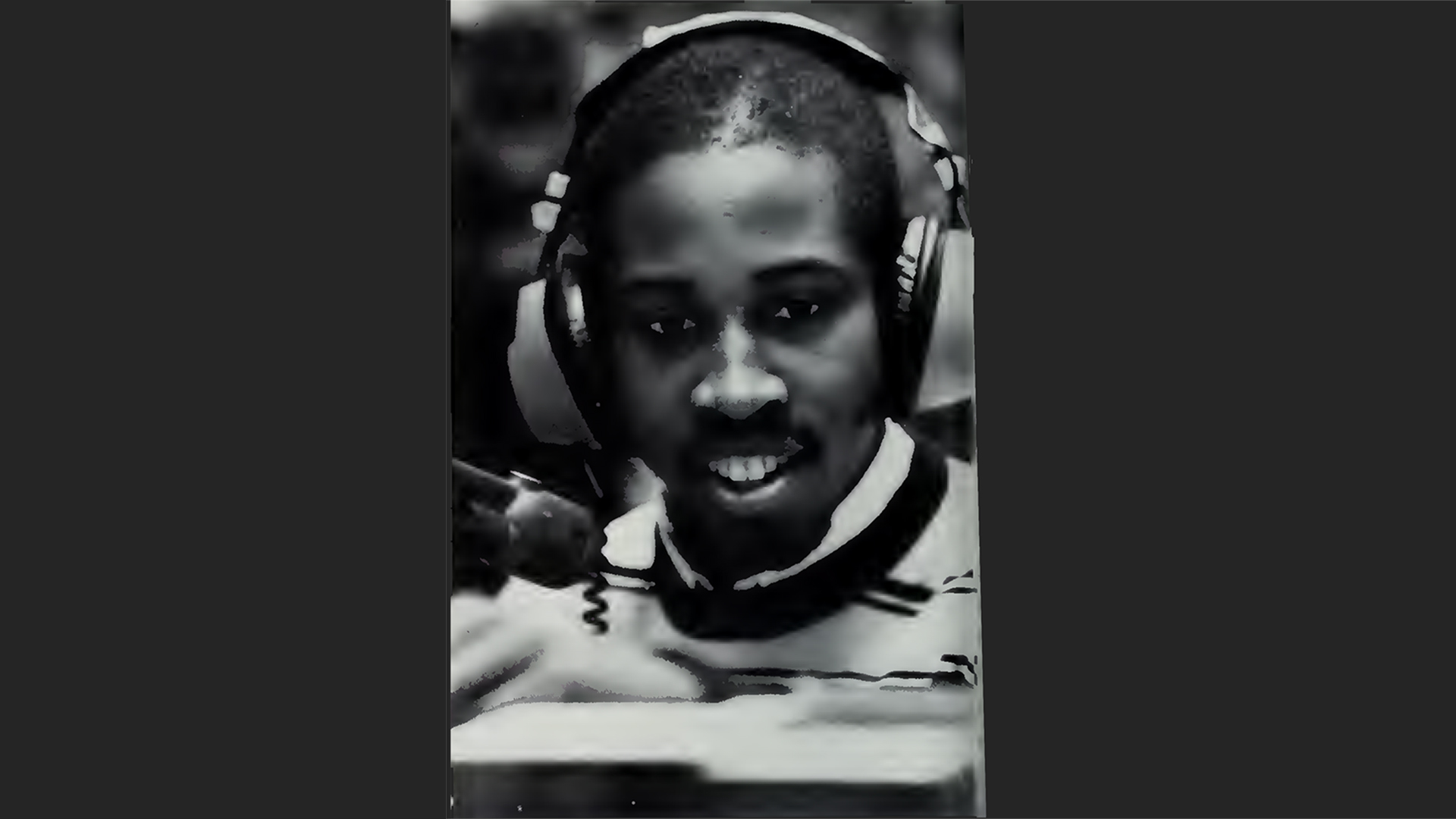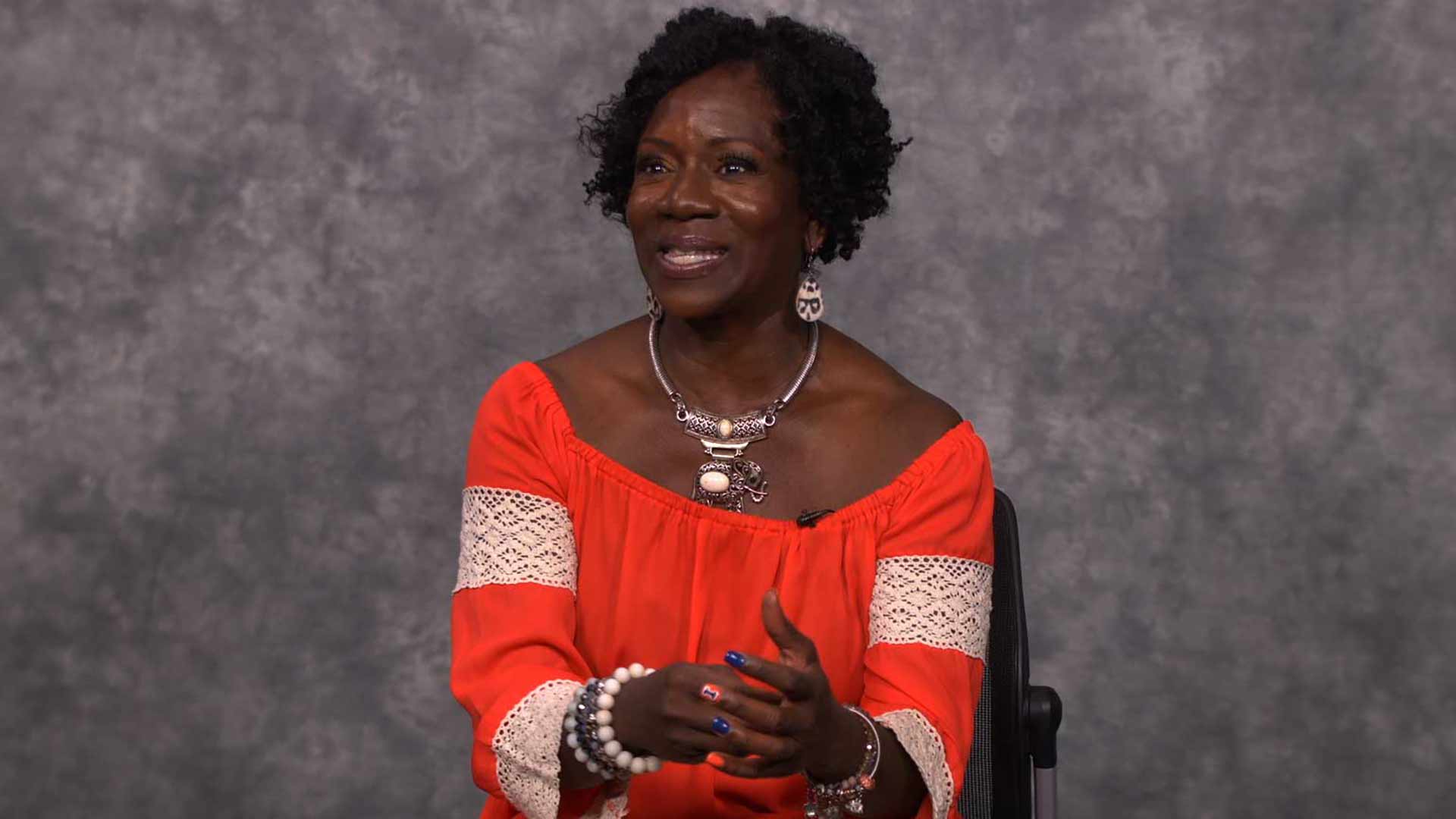
Memories of the African American Cultural Center at UIUC
- Post Date: 5/8/2021
- Author: Jennifer White, registrar; Katya Reno, marketing and communications coordinator
- Reading Time: 7 minute read
As part of the Spurlock Museum of World Cultures' temporary exhibit, Blues Dancing and Its African American Roots, we interviewed alumni from UIUC and people connected with the C-U community to learn more about the social dancing they experienced on campus and in the community. Below we share excerpts from Lisa Vernon's audio story about her experience on the University of Illinois Urbana-Champaign campus.
The interview that follows is an excerpt from our online exhibit Blues Dancing and Its African American Roots Oral Histories.
Lisa Vernon
Born in 1968, in Harvey, a suburb of Chicago, Lisa Vernon received her bachelor’s degree in Social Work from UIUC in 1999. While a student at UIUC, she also danced with the Omnimove Dancers. She became a social worker at Centennial High School in Champaign and created a dance program for low-income children through her Protégé Dance Conservatory. At Protégé, she taught jazz, hip-hop, African, ballet, modern, lyrical, and praise/spiritual dance styles.
Vernon talks about the UIUC radio station WBML—Where Black Music Lives (external link), and the role of the African American Cultural Center (now the Bruce D. Nesbitt African American Cultural Center (external link)), which served as a safe haven and a second home to her, and other students, in the late 80s and early 90s.
The African American Cultural Center was rededicated in the name of former Director Bruce D. Nesbitt in 2004. Mr. Nesbitt was a trailblazer for opportunity and equality who inspired and guided more than two decades of University students, and his legacy is another part of the Center's "fabric". Read about the history of the Bruce Nesbitt African American Cultural Center (external link) to learn more.
Black students at UIUC founded WBML—Where Black Music Lives, in 1982, after the local campus station wanted to cancel the four weekly hours of Soul Music. For more information about the history of WBML, see the article, "WBML opens gateway to the music industry" (external link) .
Lisa Vernon: “The African American Cultural Center is what it was officially called on paper. At the time, it was 3-4 % African American students at the University of Illinois. When I got here, it was 1986, and when I left, it was 1991. It was a time where it wasn’t a whole lot of us here. It was a time where you had to go to the Armory to register for your classes, so that you would connect with people. So it was a culture within a culture. We had a place where we could go and watch The Cosby Show, where we could watch Living Single, where we could watch A Different World. Then there was WBML playing the music—because music wasn't played on the radio stations until Soul Sunday....There was a radio station in this house [the African American Cultural Center] where you can hear music that you can identify with...
“... For that time, what the African American Cultural Program meant was a place where you could kick off your shoes, where you could receive tutoring, where you could receive resources, where you could go and cry, where you could go get support, where you could go take a nap.
“... I remember Bruce [Nesbitt] writing up for a grant because all of the furniture was old. Kids were sleeping on old, dilapidated furniture, and they [the University] didn't care. But we deserved more...
“Then then there was the School of Social Work right down the street. And I was at both. They both reminded me a lot of each other—where it was so rich with character, where the floor squeaked, where the lights were dim—they probably needed the bulbs changing. But it was a place that I felt most comfortable—[more] than any place on this campus, besides going to the Dance Department. But it was a place where people could come, or meet up, have meetings, organize. Meetings for fairness and equality were planned there. Barbecues were on the back porch, because we didn't have sorority houses and fraternity houses. We had a few. But we didn't have many. And so that [the Black House] was a staple for lots of things. It served as a Walmart, where you can go get everything that you needed.
"... And upstairs was where we kept the dance costumes. Where I went through every dress to make sure that there weren't rips and tears. Then we had one of our dancers, she was a seamstress, so we kept those costumes. Then we wanted drums, so we had to find a place to store that stuff. Then there was Bruce's office, where he stenciled the newsletters. He would cut and paste, and look over his glasses, and rock back and forth. He was a member of Iota Phi Beta Fraternity, Incorporated. He was the Godfather. [That] is what they called him… but he was a very humble man.
“... There also were [an] extension of outreach and services in the community [by AACP], where we met at Douglas Center. We would try Women's Wheels, and feed the homeless, and, you know, do creative programs for the community. So it wasn’t just there. The expectation is that you go beyond this space and make a difference. Even if you don't stay, it’s now your job. The torch is now yours to pass on. But in that time, in that space, that was a safe haven for black and brown people.”
Hear more oral histories by Lisa Vernon and others connected with the dance community in the Champaign-Urbana area at our online exhibit for Blues Dancing and Its African American Roots Oral Histories.
Watch the video, "A Home of Their Own" (external link), to learn more about the formation of the African American Cultural Center.
-
 Disc jockey, Lamont Young, at the WBML studios in 1983. Photo credit: Randall R. Stuken. From the Illio yearbook 1983 (external link). University of Illinois Digital Library. .
Disc jockey, Lamont Young, at the WBML studios in 1983. Photo credit: Randall R. Stuken. From the Illio yearbook 1983 (external link). University of Illinois Digital Library. .
-
- Share:
- Subscribe to Newletter
- Giving



